January 8, 2021: Drones Used By Police Over Protesting Farmers Were Not Authorised To Fly
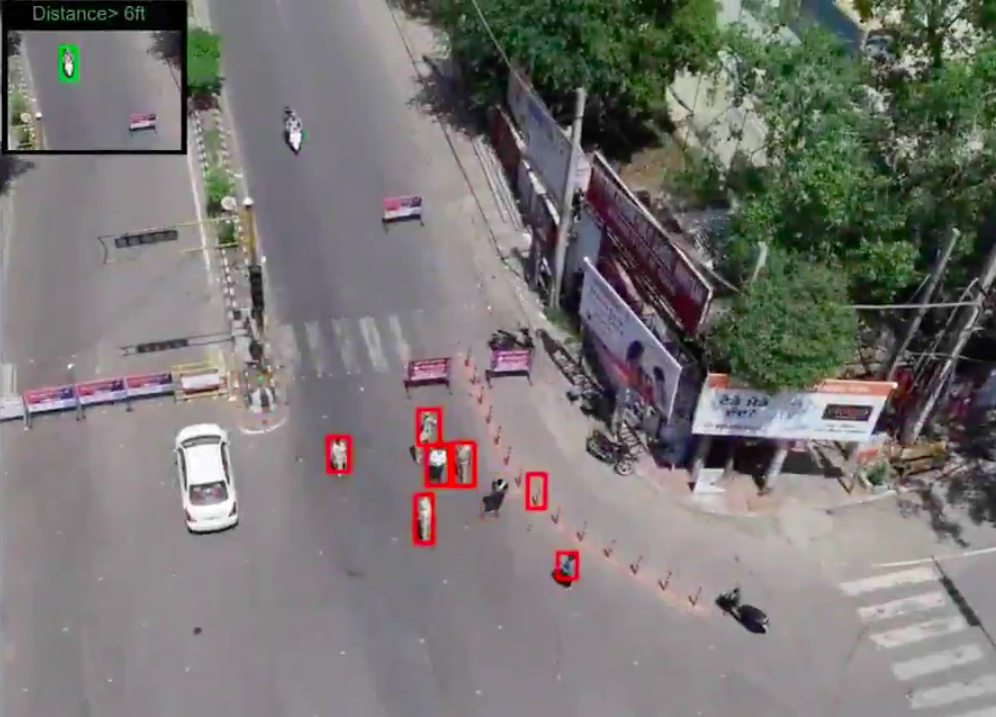
The drones the police flew over farmers protesting against the recently enacted farm laws were illegal — their use was never authorized by the Civil Aviation Ministry, or the Directorate General of Civil Aviation (DGCA), both entities which regulate drone use in the country, RTIs filed by MediaNama revealed. It’s a worrying example of the amount of discretion available to on-ground police personnel — especially when it’s about using tech to carry out mass surveillance. As the protests against the farm laws broke out in November last year, and as farmers started their march towards Delhi, the police had deployed drones to constantly monitor the situation. Both Delhi and Haryana Police were present at the protests. It isn’t clear which police force deployed these drones. We have reached out to both departments for more details. Multiple people reporting from the ground had shared visuals of these drones:
#WATCH Drone camera deployed for security surveillance at Delhi-Faridabad (Haryana) border, in view of farmers' 'Delhi Chalo' protest march pic.twitter.com/gfoCTinFIe
— ANI (@ANI) November 26, 2020
November 26, 2020: The autonomous body filed the RTI in December, with the Civil Aviation Ministry, and the DGCA, asking for a list of all the organizations they had allowed to fly drones between October and December 2020, along with a copy of the authorization letters issued to these organizations.
In response to the RTI, the Civil Aviation Ministry said it had exempted the following organizations from deploying drones during that time period. As is evident, no police force was allowed by the Civil Aviation Ministry to deploy drones:
- Indira Gandhi Rashtriya Uran Akademi (IGRUA)
- Odisha Mining Corporation Ltd. (OMC)
- National Capital Region Transport Corporation (NCRTC)
- Global Konnect Aviation Services Pvt. Ltd.
- National Thermal Power Corporation (NTPC)
- CEPT University
- International Crops Research Institute for Semi-Arid Tropics (ICRISAT)
Ref: https://krishijagran.com/news/farmer-s-protest-exclusive-drones-used-by-police-over-protesting-farmers-were-not-authorized-to-fly-reveals-rti/
Punjab Congress President has sought action against Haryana HM & Haryana Police officials for violating territorial jurisdiction & firing tear gas shells & rubber bullets on Punjab farmers Handed over a memorandum addressed to Bhagwant Mann
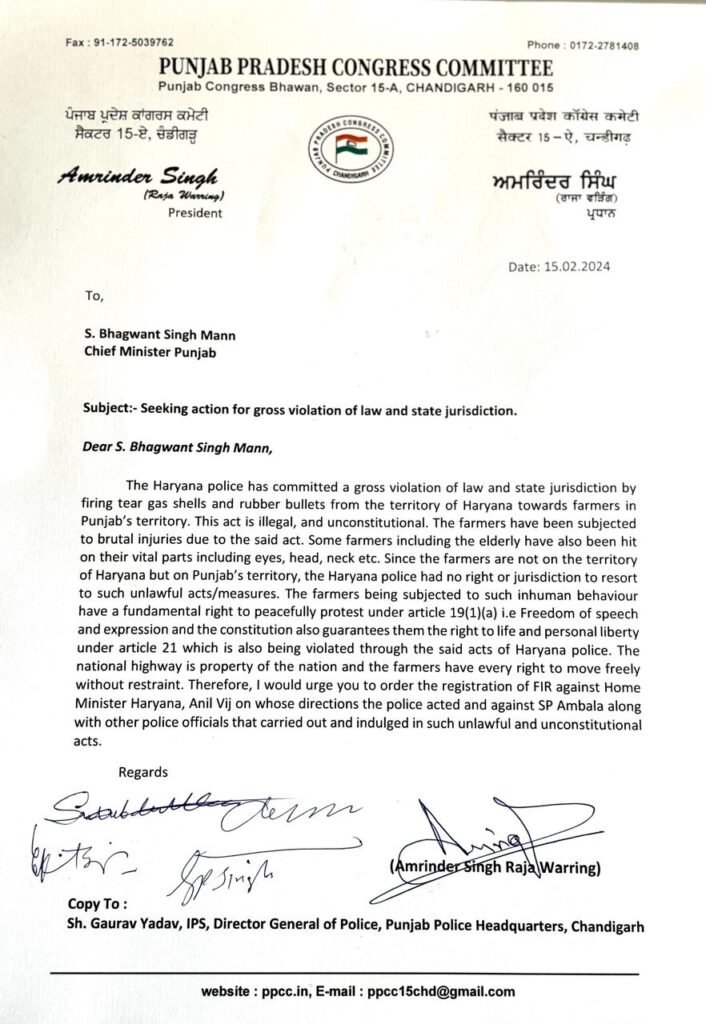
The use of drones armed with tear gas and rubber bullets represents a clear violation of the civil liberties of the protesting farmers. These individuals have the right to peacefully assemble and express their grievances without fear of violent reprisals from law enforcement. The deployment of drones with such weaponry not only escalates tensions but also endangers the lives of innocent civilians.
VIDEO | Here’s what Haryana AAP President DrSushilKrGupta said on the ongoing farmers’ protest. “Farmers had given a notice to the (Haryana) government for this peaceful protest long back. Not only water cannons and tear gas shells were used, rubber bullets were also fired (on protesting farmers). Such security arrangement, on Punjab-Haryana border and Delhi-Haryana border, is not there even on India-Pakistan border.”
VIDEO | Here's what Haryana AAP President @DrSushilKrGupta said on the ongoing farmers' protest.
— Press Trust of India (@PTI_News) February 13, 2024
"Farmers had given a notice to the (Haryana) government for this peaceful protest long back. Not only water cannons and tear gas shells were used, rubber bullets were also fired (on… pic.twitter.com/3oZ7eJodZw
February 18, 2024: Protests by farmers in India and the use of less-lethal weapons like rubber bullets by police to control crowds. It mentions studies by organizations like Amnesty International and the Bureau of Police Research and Development (BPRD) in India on the misuse of kinetic impact projectiles (KIPs) like rubber bullets during protests. While the Amnesty report documents cases of serious injuries and loss of eyesight caused by these weapons globally, including during the ongoing farmer protests in India, a BPRD study from 2012 cites that Haryana police claimed to never use rubber bullets.
The Amnesty International report documents that the use of kinetic impact projectiles (KIPs), such as rubber bullets, has led to thousands of injuries across the world, including permanent disabilities such as loss of sight in one or both eyes, and scores of deaths. The injuries caused by KIPs include eye trauma, traumatic brain injuries, and severe injuries and fatalities when vulnerable upper-body regions such as the head, neck, and upper torso are struck.
The specific injuries caused by kinetic impact projectiles (KIPs) according to the Amnesty report include eye trauma, traumatic brain injuries, and severe injuries and fatalities when vulnerable upper-body regions such as the head, neck, and upper torso are struck.
The Amnesty report documented cases of injuries caused by kinetic impact projectiles in countries such as Chile, Colombia, France, Iran, Israel, Lebanon, Spain, Sudan, and the USA, in addition to India.
Tensions escalate in India as police continue to crack down on thousands of farmers as the protesters edge towards the capital. Massive contingents of police and paramilitary personnel have been deployed, firing large numbers of tear gas shells, rubber bullets, and water cannons… pic.twitter.com/FLVFg43Y3L
— red. (@redstreamnet) February 14, 2024

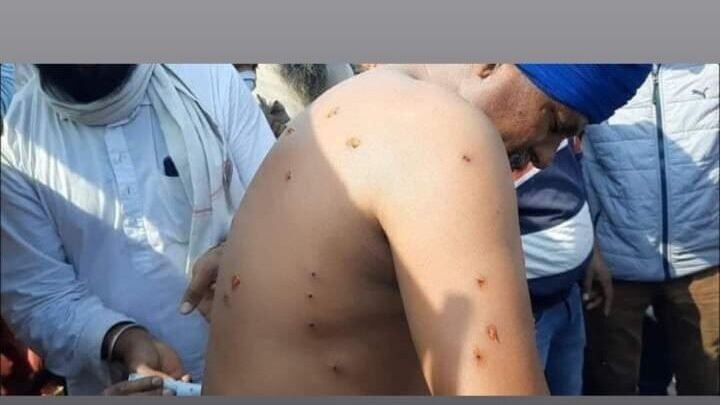
At Haryana's Shambu border, a barrage of tear-gas, rubber-bullets are being unleashed on #FarmersProtest, who are demanding rights & dignity. At the same time, in Haryana's Rewari, Modi is busy inaugurating projects, but maintains criminal silence on the demands of #Farmers. pic.twitter.com/INIRmUgGRc
— CPIML Liberation (@cpimlliberation) February 16, 2024
On directions given by their leaders today Farmers didn’t try to move towards Haryana & Dehli. Despite this security forces from Haryana indiscriminately fired tear gas shells, rubber bullets on farmers who were peacefully standing on the Punjab side.
On directions given by their leaders today Farmers didn't try to move towards Haryana & Dehli. Despite this security forces from Haryana indiscriminately fired tear gas shells, rubber bullets on farmers who were peacefully standing on the Punjab side.#FarmersProtest2024 pic.twitter.com/AFeEisJ4fm
— Gurshamshir Singh Waraich (@gurshamshir) February 14, 2024
Around 120 farmers have been injured by rubber bullets and tear gas shells.
— Harvir Singh (@Harvir25) February 14, 2024
Some farmers also have pallets on their eyes and forehead.
Which shows that the govt has crossed the limits of oppression on farmers.#FarmerProtest2024@KMajdoormorcha pic.twitter.com/t2DiMllKrd
It has come to light that the drones employed by the police during the protests were equipped with rubber bullets and dangerous tactics.
The use of drones with rubber bullets poses a significant risk to the safety and well-being of protesters and bystanders. The potential for harm in such a situation is enormous, and strict measures must be put in place to prevent the misuse of this technology in the future.
The use of drones by the Indian police is regulated by the Drone Regulations 2021, which sets out the rules and restrictions for the operation of drones in the country. According to these regulations, drones equipped with weapons, including rubber bullets, are prohibited from being used for any purpose. This means that the use of drones with rubber bullets by the Indian police would violate these regulations and could result in legal consequences for the responsible authorities.
Tear gas and rubber bullets as Indian farmers march on Delhi
Shame on government of India and Haryana. Firing tear gas and rubber bullets on peacefully protesting farmers. #punjab #FarmerProtest2024 pic.twitter.com/BVUuszbtUZ
— Harinder Gill (@Harinde72101385) February 17, 2024
These protests are a continuation of demonstrations two years ago, during which clashes with police left 600 people dead.

Shambhu border, India – Thousands of farmers have gathered on the outskirts of India’s capital, New Delhi, to set out demands for guaranteed minimum prices for their crops, debt relief and policy reforms.
The protests are being led by more than 250 farmer unions, including the Kisan Mazdoor Sangharsh Committee (a platform which represents more than 150 unions) and the Samyukta Kisan Morcha (SKM), which has the backing of more than 100 unions. With participants arriving far and wide from states like Punjab, Haryana, Uttar Pradesh, Rajasthan and Madhya Pradesh, the protests are being coordinated from Punjab and are gaining support that transcends state boundaries.
Starting on Tuesday this week, the farmers are marching towards New Delhi with their tractors and trucks in tow. In an attempt to halt the march, the Indian authorities have placed barriers, nails and other heavy machinery along the highways that run towards the capital. During one attempt by demonstrators to demolish barricades at Shambhu village on the Punjab-Haryana border, the Haryana police responded by firing rounds of tear gas to scatter them. Haryana borders New Delhi, and is ruled by the Bharatiya Janata Party of Prime Minister Narendra Modi.
These protests are a continuation of demonstrations in and on the outskirts of New Delhi which took place two years ago. They lasted for more than a year, during which time more than 600 people were killed during violent crackdowns by the authorities. Following the government’s agreement to rescind three agricultural reform laws that the farmers objected to, the protests were called off. Other demands they had made, however, were not met – and these issues have flared up again.
Demands for a strong system to set minimum support prices (MSP) to protect farmers from market fluctuations are at the core of the protest. The protesters are also demanding debt relief and restraints on the privatisation of the power industry. “I was here last time for the whole duration. We are here again because the promises made have not been fulfilled, for example, the MSP. When they formed the government, they promised to waive off the loans, but that did not happen. They promised to deliver justice in the case of the Lakhimpur Kheri incident [when protesting farmers were rammed by a car and killed in October 2021],” Sukvindra Kaur, 55, from Bathinda, Punjab told Aljazeera.
“We were forced to hit the roads again over the same demands,” she added. “The promises made by the present government have to be fulfilled by them, and tomorrow if there is any new government, why would they fulfil our demands? We never wanted to do it but farmers are committing suicide; they have huge loans. We are here to save them.”
Another farmer, Dharam Singh Sidhu, 60, vice president of Kissan Sangash Samiti for Ferozepur, Punjab, called the teargassing of farmers and the firing of rubber bullets at the protesters “undemocratic”.
“Under democracy, everyone has the right to protest peacefully, but despite moving peacefully, they are barricading, shelling and opening fire at us. No farmers are engaging in any unlawful activity; we are protesting peacefully,” Sidhu said.
The timing of the protest ahead of impending elections in the next few months highlights the political significance of despair among farmers, who make up a sizeable voting bloc in the country.
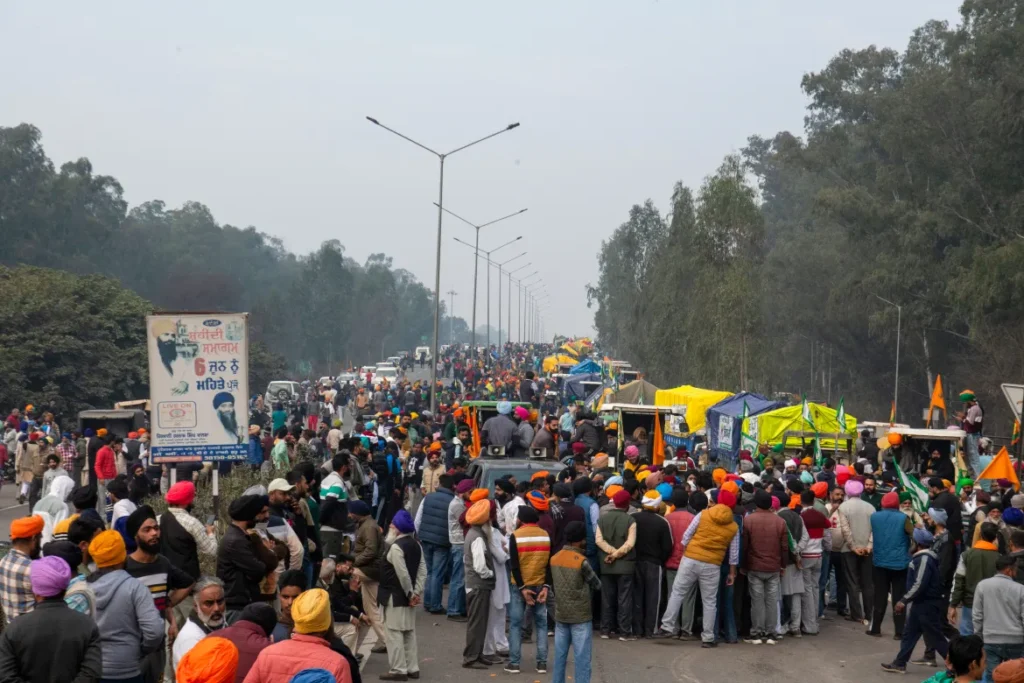
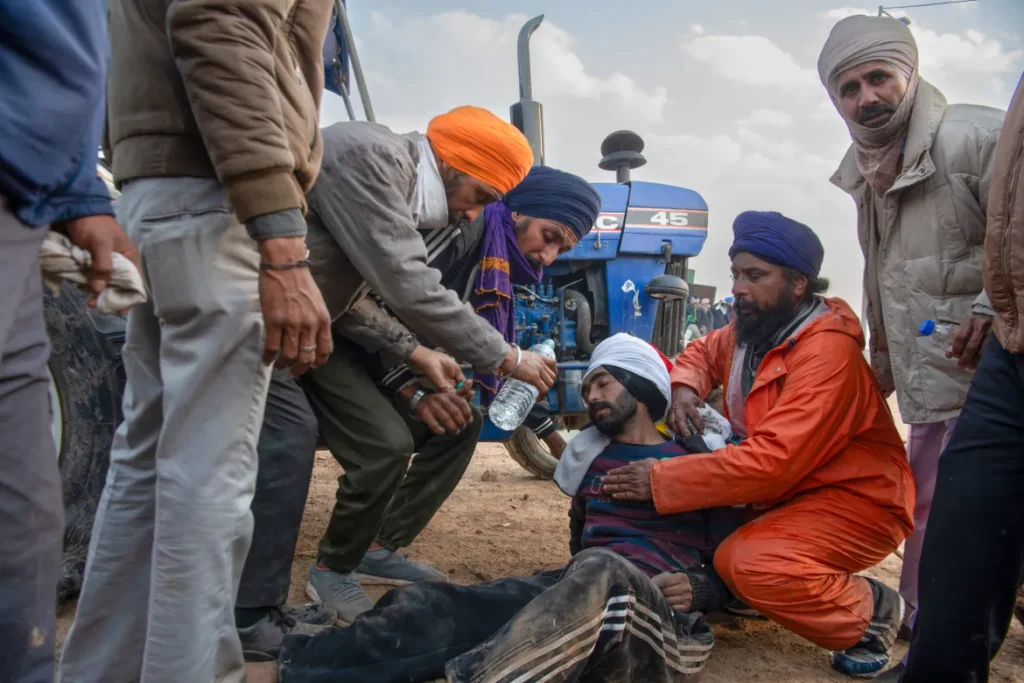

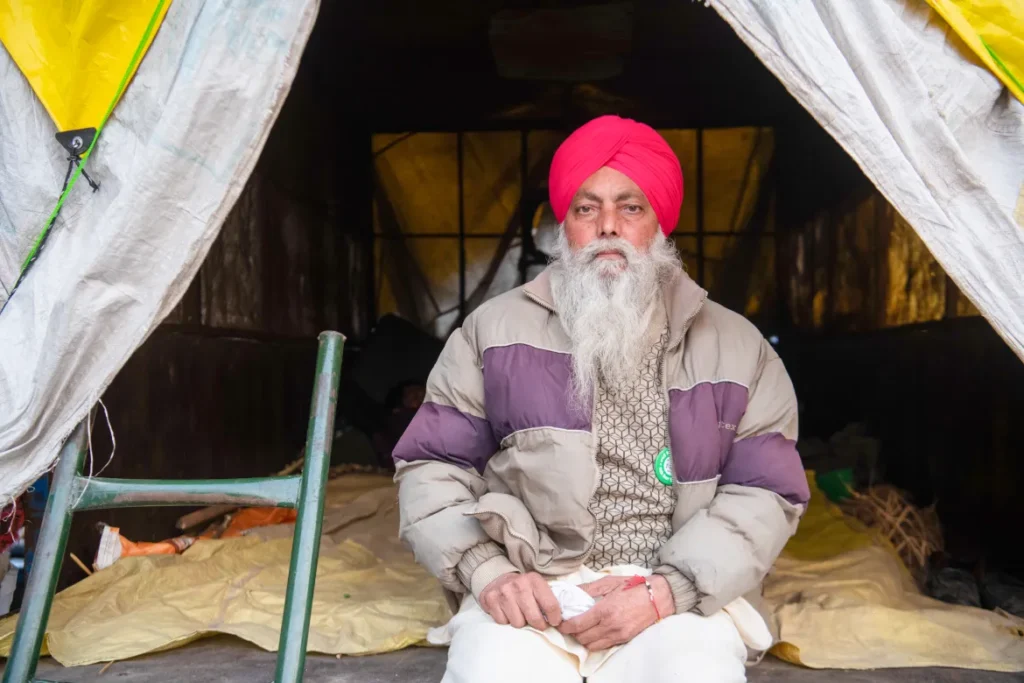
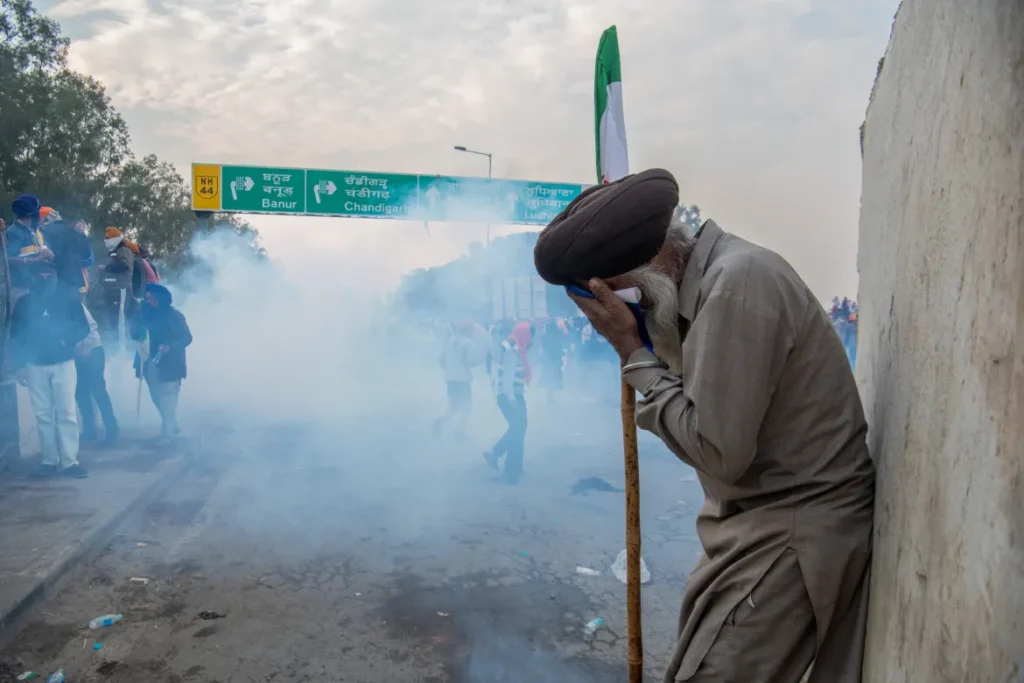


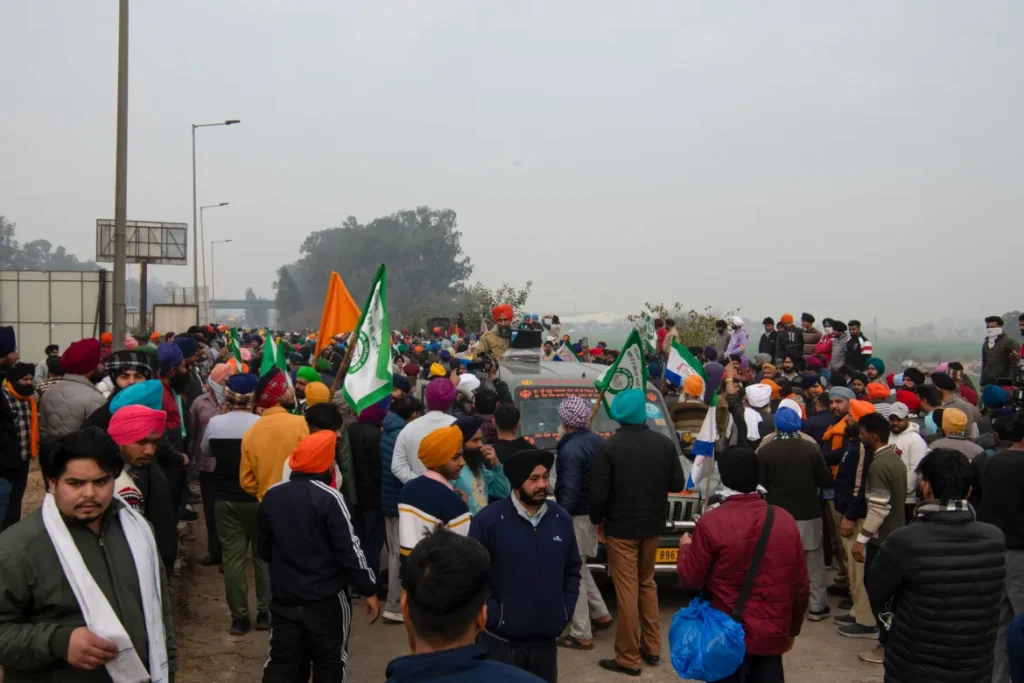
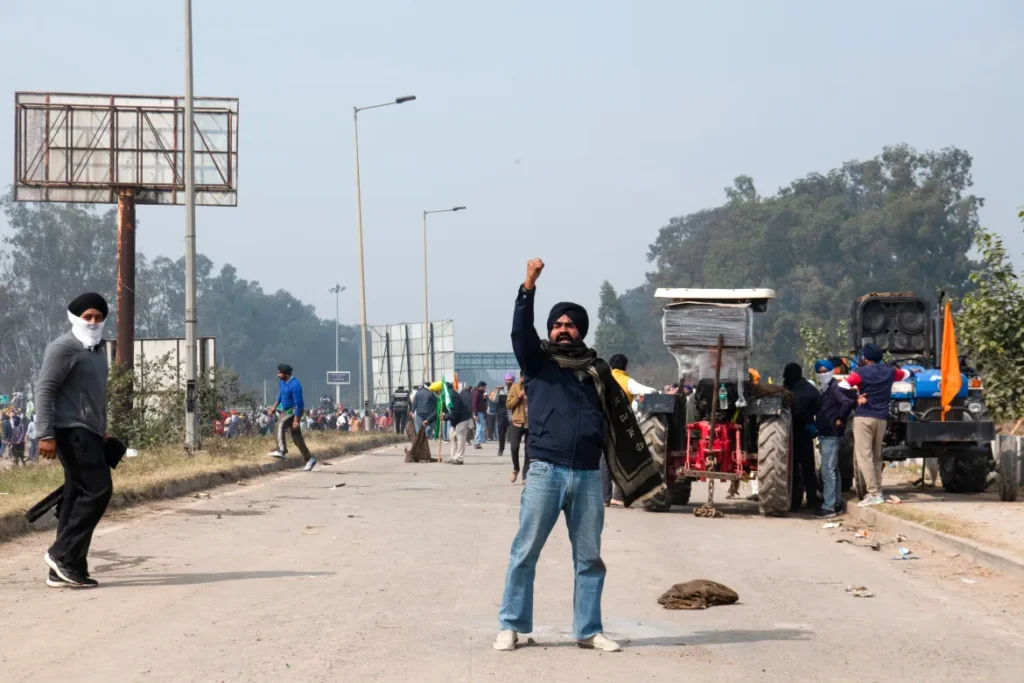


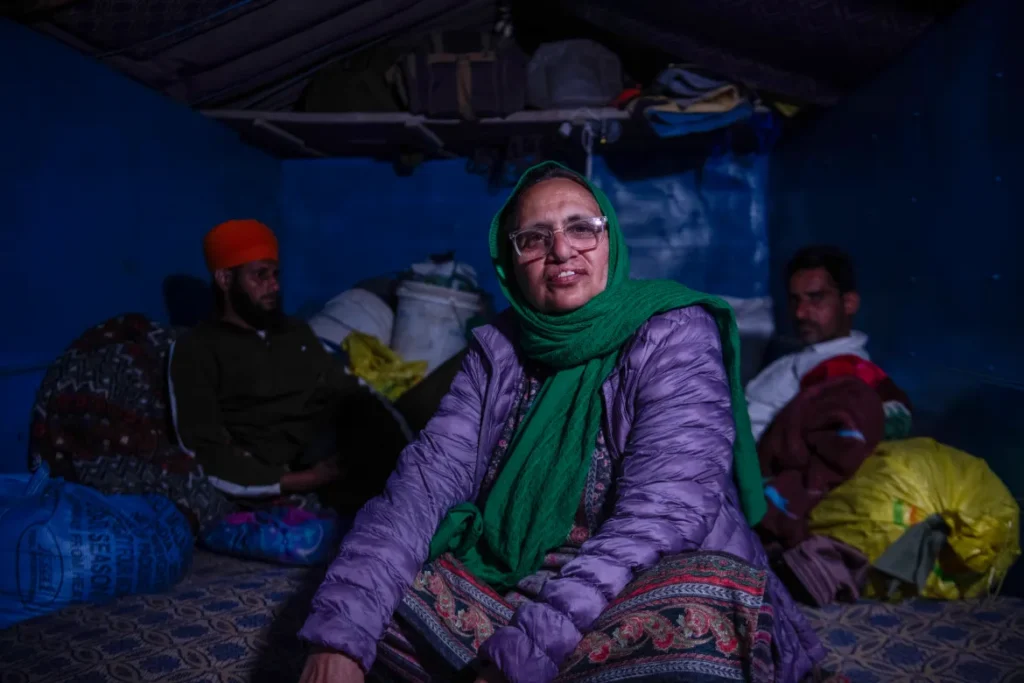


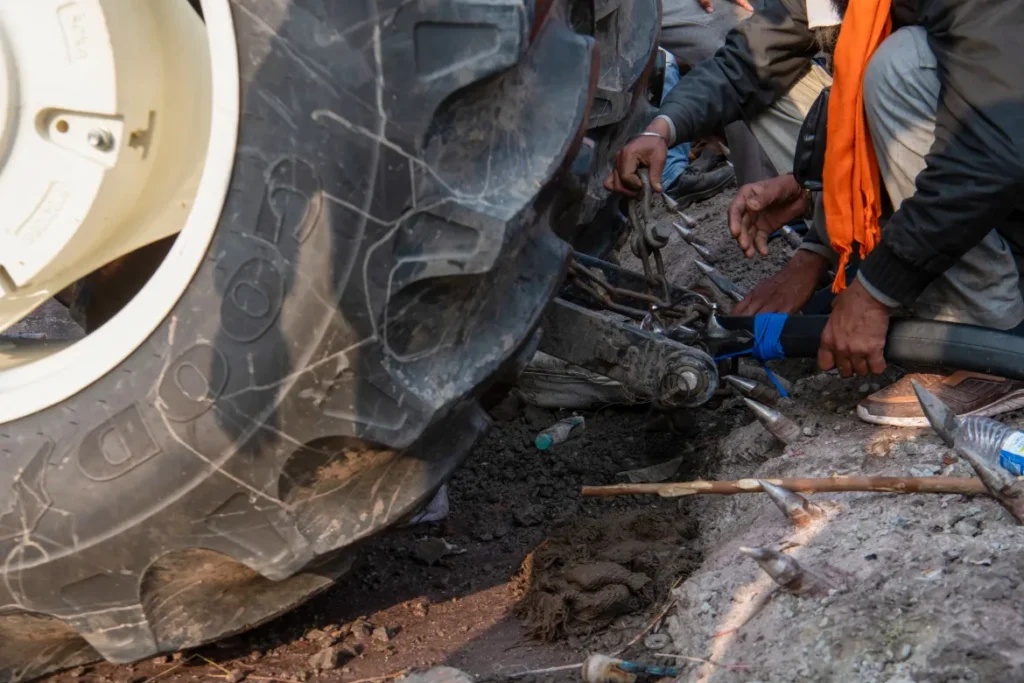
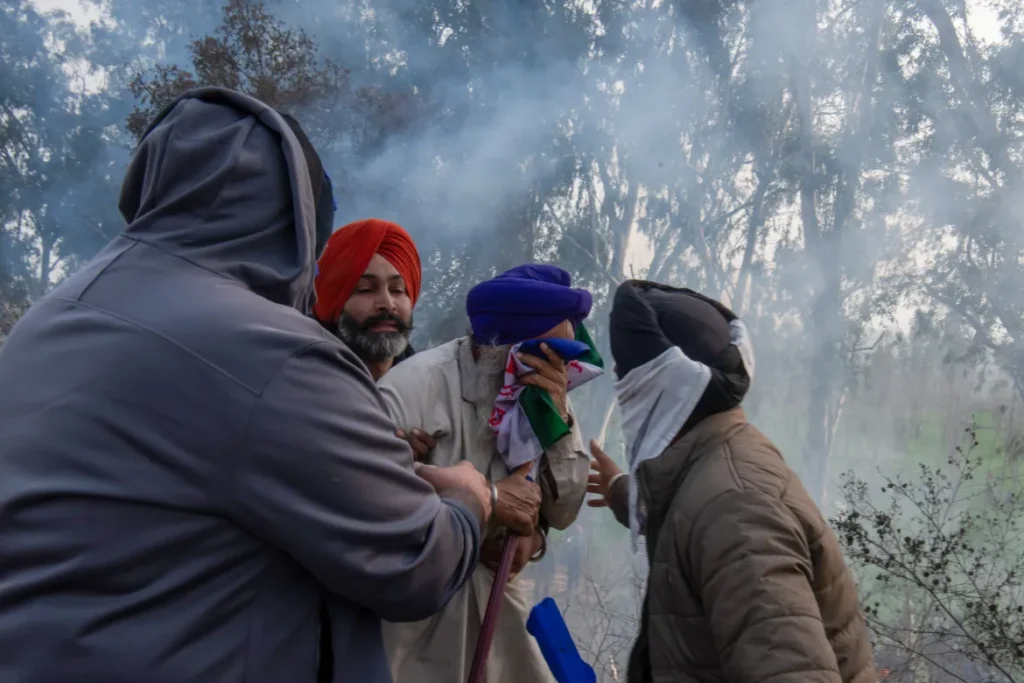
Source: Indianexpress, Medianama, Twitter, Al Jazeera, Image-Al Jazeera(Rohit Lohia), Youtube,
Also Read:
